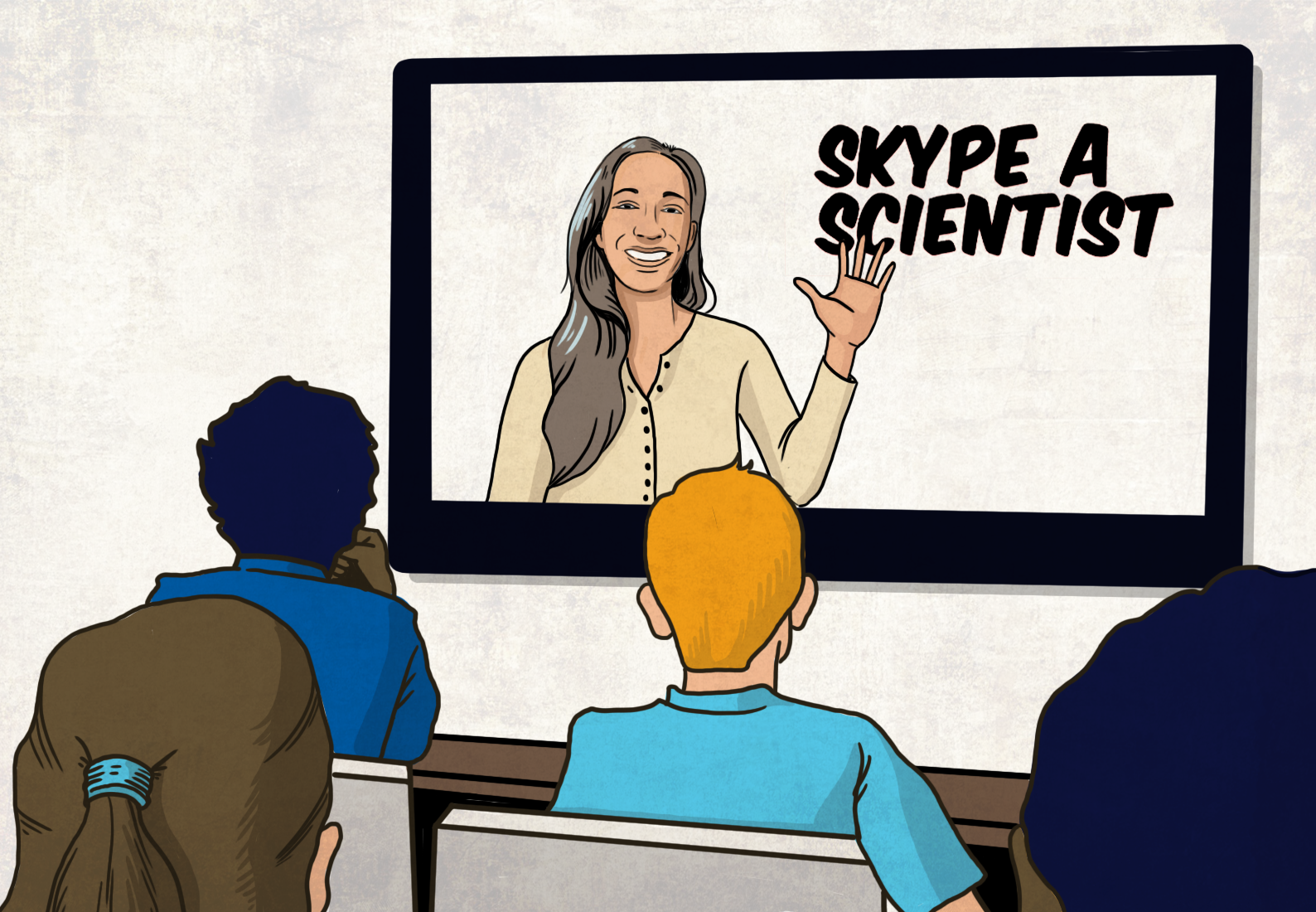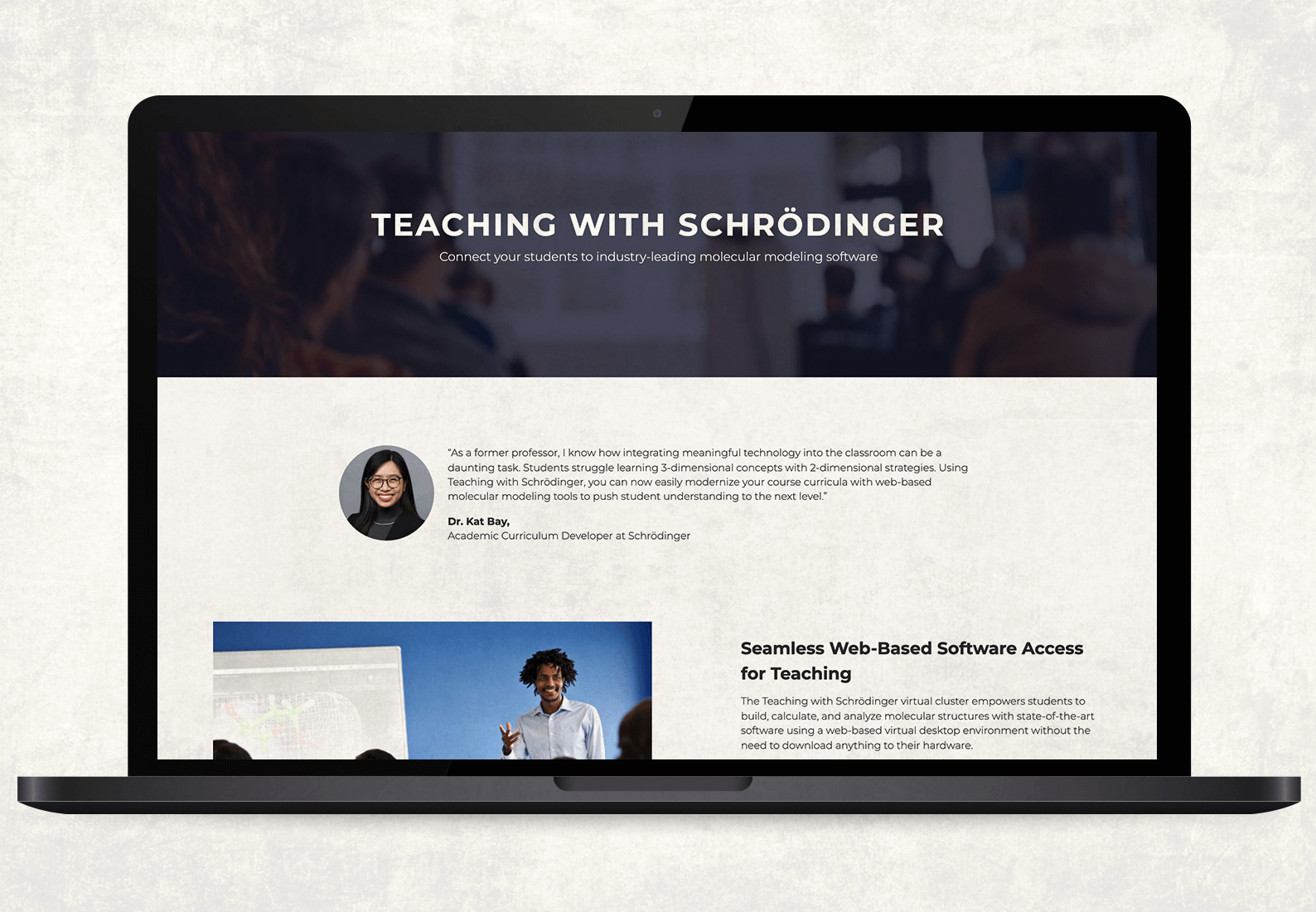Inspiring young students to become the next generation of scientists is a lofty goal for any organization. One educational program, called Skype a Scientist, is doing just that by connecting actual scientists with classrooms around the globe via video conferencing (Skype, Zoom, or Google hangouts). The mission of this program is to make science accessible and fun through personal connections with scientists.
We sat down with Dr. Jenny Chambers, Director of Education at Schrödinger, who recently participated in Skype a Scientist (for the ninth time!) to ask about her experience with the program.
What can you tell us about the Skype a Scientist program?
Skype a Scientist is a wonderful program that connects K-12 classrooms around the world with actual scientists across all disciplines. The goal of this endeavor is to spark student’s interest in the sciences and to help break down the barriers on the path to considering a career in the field. One important element of the Skype a Scientist program is that it familiarizes young students with the idea that a scientist can be anyone, including them.
What was your ultimate goal in participating in the Skype a Scientist program?
My goal is simply to get kids excited about the possibility of science. Many students today are digital natives, so a secondary goal is to introduce them to the idea of using computers and technology for science. Most recently, in January, I spoke to K-fifth graders about how to make molecules on the computer, which introduced them to molecular modeling concepts.
I signed up for the Skype a Scientist program in 2019 and I’m really grateful that I did. In trying to put together a presentation, I was forced to think about how to describe what we do here at Schrödinger to an 11-year-old. It challenged me to think about how to describe our work without the more technical jargon that I usually lean on, which was a great exercise for me as a science communicator.
“I view Skype a Scientist as a mission critical program for the science community.”
How many times have you participated in the Skype a Scientist program?
This past January was my ninth event! The Education team here at Schrödinger has participated in 10 events, in total. All of my presentations have centered on computer-aided drug and material design, mostly focusing on the drug development side.
I’ve discussed how scientists are using computational techniques to speed up the research process and bring their molecules to life on the computer, and then test them using the same physics you would see used in a lab. You don’t need to have access to a big, expensive wet lab facility. If you have a laptop or computer, you can do science.
What do you think is most valuable for students in the Skype a Scientist program?
The most valuable part of the program is the ability to show students that it’s possible for anyone to be a scientist. Once students have that understanding, the hope would be that they’ll be more inclined to consider studying the sciences or pursuing a career in it.
How interactive is the Skype a Scientist program? Have you been asked any interesting questions from the students?
I actually get a lot of very thoughtful questions, with a few off-the-wall ones as well. Last week, somebody asked me “did you know I play guitar?” while somebody else asked, “can you come back next week and explain quantum mechanics?”
There are usually many questions around what’s possible with the software. When talking specifically about drug development, students are always blown away by how long it takes to develop a new drug.
Can you share any thoughts about the future of science education and the impact of programs like this?
I view Skype a Scientist as a mission critical program for the science community.
We live in an era where access to information is no longer the barrier, but rather it is the interpretation and evaluation of the quality of information that is the challenge. Therefore, it’s imperative that scientists make the push towards helping people understand and parse information from reputable scientific resources that are understandable for whatever their backgrounds may be.
Several years ago, I read a report called “The Lost Einsteins.” It is a study examining the inequality of opportunity and the idea that if Einstein was one in a million, we should have had many more Einsteins by now. Where are our lost Einsteins, and what are the correlations between children going into STEM careers? The study found that the strongest indicator for whether a child would go on to pursue a STEM career was if they had a parent or close adult friend in a STEM career. For children who do not have that, it feels like we’re failing them. They could be missing out on a huge opportunity simply because they don’t know anyone working in the sciences.
This is why it is important to be able to push back against that societal challenge by exposing all children to scientists and planting the seed that “I can be a scientist too”.








